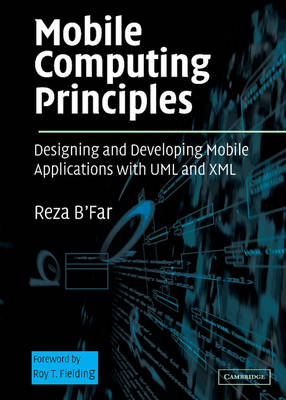
Mobile Computing Principles
Cambridge University Press (Verlag)
978-0-521-81733-2 (ISBN)
Written to address technical concerns that mobile developers face regardless of the platform (J2ME, WAP, Windows CE, etc.), this 2005 book explores the differences between mobile and stationary applications and the architectural and software development concepts needed to build a mobile application. Using UML as a tool, Reza B'far guides the developer through the development process, showing how to document the design and implementation of the application. He focuses on general concepts, while using platforms as examples or as possible tools. After introducing UML, XML and derivative tools necessary for developing mobile software applications, B'far shows how to build user interfaces for mobile applications. He covers location sensitivity, wireless connectivity, mobile agents, data synchronization, security, and push-based technologies, and finally homes in on the practical issues of mobile application development including the development cycle for mobile applications, testing mobile applications, architectural concerns, and a case study.
Reza B'far is an executive consultant currently serving as the CTO of Voice Genesis and Acting CTO of Semantic Messaging Systems Inc. His company, Cienecs Inc., has had a variety of engagements in the mobile arena with startups as well as Fortune 500 companies. Early in his career, he has worked for Weyerhaueser Company, Parr & Associates Inc., and National Oceanic research department of NASA. He has spent the past ten years working for Noor Electrical Engineering, Virtual Mortgage Network, AdForce Inc., eBuilt Inc., and DataTrace Corporation. He is currently an independent contractor working with a variety of companies Asian architect and/or CTO, including some in the mobile arena.
Part I. Introductions to the Main Topics:1. Introduction to mobile computing; 2. Introduction to mobile development frameworks and tools; 3. XML: the document and meta-data format for mobile computing; 4. Introduction to UML; Part II. Device Independent and Multi-Channel User Interface Development Using UML: 5. Generic user interface development; 6. Developing mobile GUIs; 7. Voice user Interfaces and mobile applications; 8. Multi-channel and multi-modal user interfaces; Part III. Additional Dimensions of Mobile Application Development: 9. Mobile agents and peer-to-peer architectures for mobile computing; 10. Wireless connectivity and mobile applications; 11. Synchronization and replication of mobile data; 12. Mobility and location information; 13. Active transactions; 14. Mobile security; Part IV. Putting the Project Together: 15. The mobile development process; 16. Architecture, design, and technology selection; 17. Mobile application implementation hurdles; 18. Testing; 19. A case study.
| Erscheint lt. Verlag | 1.11.2004 |
|---|---|
| Vorwort | Roy T. Fielding |
| Zusatzinfo | 150 Line drawings, unspecified |
| Verlagsort | Cambridge |
| Sprache | englisch |
| Maße | 178 x 254 mm |
| Gewicht | 1720 g |
| Themenwelt | Mathematik / Informatik ► Informatik ► Netzwerke |
| Informatik ► Software Entwicklung ► Objektorientierung | |
| ISBN-10 | 0-521-81733-1 / 0521817331 |
| ISBN-13 | 978-0-521-81733-2 / 9780521817332 |
| Zustand | Neuware |
| Haben Sie eine Frage zum Produkt? |
aus dem Bereich


